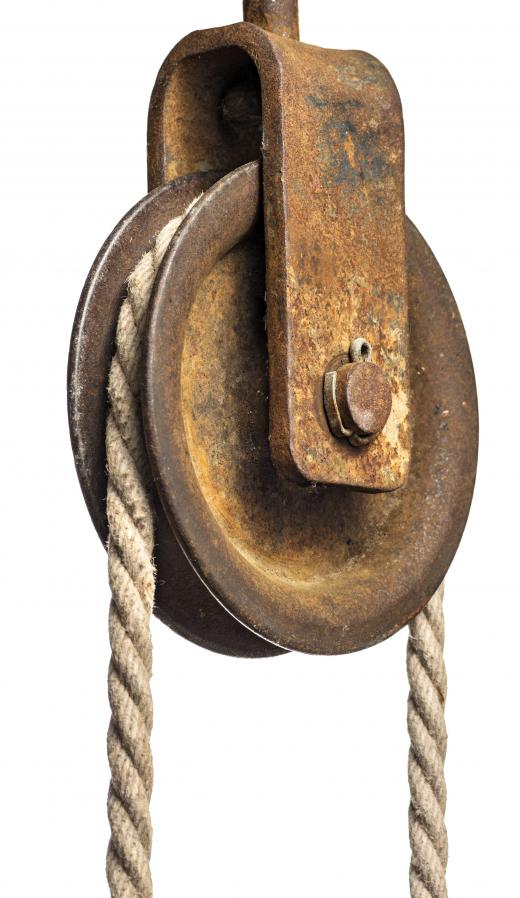A block and tackle is a simple but highly effective lifting device, thought to be invented by Archimedes. These systems were used extensively for construction in the ancient world, and continue to be used today for a variety of applications, especially at sea, where non-motorized lifting systems are highly useful. A basic block and tackle includes a single fixed pulley, or block, and at least one additional pulley, linked with rope, to form a complete set. Depending on the size of the load being lifted, additional sets may be used to further distribute the weight.
The engineering of a block and tackle uses pulleys to distribute the weight of a heavy object. By lightening the load, the pulleys make it possible for one person or a small crew to move a potentially very heavy object relatively safely. In a single set, a hook from the free swinging pulley is attached to the object being lifted, and the pulleys are threaded with rope. The user pulls on the free end of the rope until the object has been moved. In more complex systems, the rope may run through a series of pulleys to make the end load even less.

For each additional block and tackle added to the set, more rope must be used. While additional sets can be useful, after a certain point they will create friction, interfering with the easy movement of the lifting system. Thus, assembling a block and tackle system does include some judgment calls, because the user needs to decide how to balance the need to create a lighter load with the extra rope and friction multiple pulleys create. It is also important to have safety measures in place such as belays to prevent the load from falling while it is being lifted.

The mechanics behind a block and tackle involves a force for distance trade. What this means is that, the more involved the pulley system, the longer the rope to work is has to be, translating into more total distance that the user must pull it. However, the force of the user's work is more powerful with a longer rope, because of the weight distribution that it permits. Many other everyday items involve force for distance trade-offs, including things like nail clippers which operate on the lever principle, and car brakes, which use hydraulics.
Ever since she began contributing to the site several years ago, Mary has embraced the exciting challenge of being a About Mechanics researcher and writer. Mary has a liberal arts degree from Goddard College and spends her free time reading, cooking, and exploring the great outdoors.

